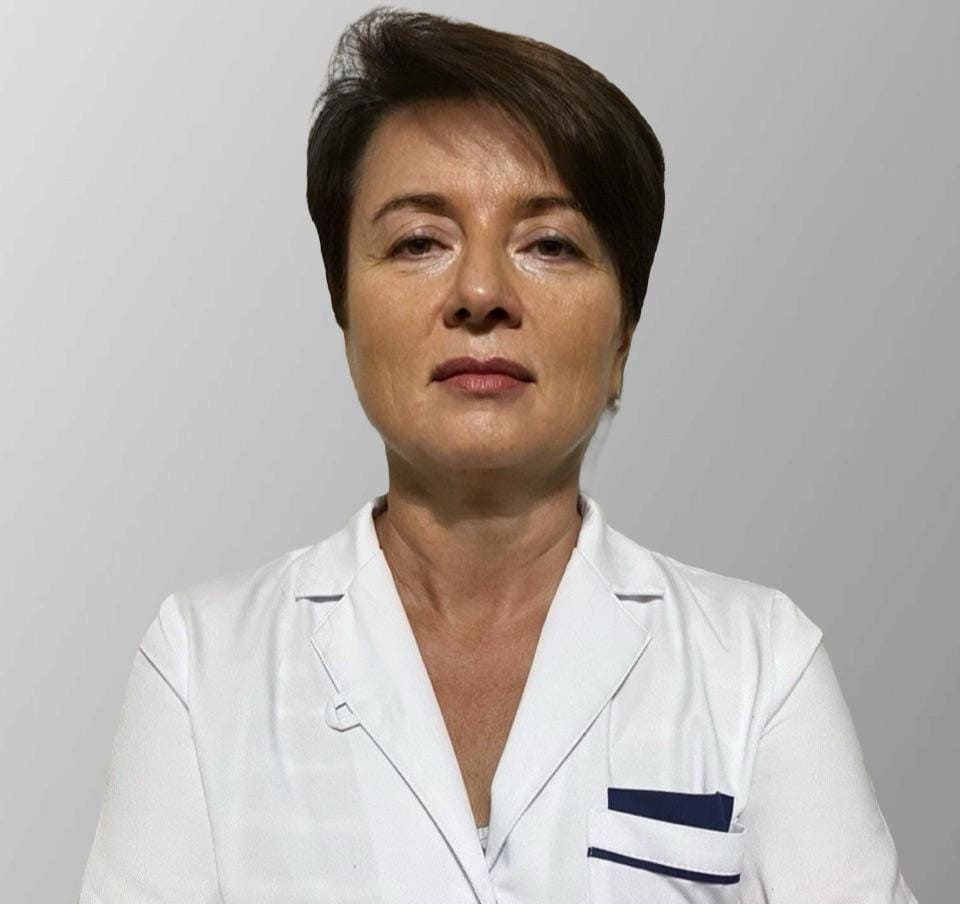
PANTOK 20 mg COMPRIMIDOS REVESTIDOS POR PELÍCULA
Pergunte a um médico sobre a prescrição de PANTOK 20 mg COMPRIMIDOS REVESTIDOS POR PELÍCULA

Como usar PANTOK 20 mg COMPRIMIDOS REVESTIDOS POR PELÍCULA
Introdução
Prospecto: informação para o paciente
Pantok 20 mg comprimidos revestidos com película
Simvastatina
Leia todo o prospecto detenidamente antes de começar a tomar este medicamento, porque contém informações importantes para si.
- Conserva este prospecto, porque pode ter que voltar a lê-lo.
- Se tiver alguma dúvida, consulte o seu médico ou farmacêutico.
- Este medicamento foi-lhe prescrito apenas para si e não deve dá-lo a outras pessoas, embora apresentem os mesmos sintomas que si, porque pode prejudicá-las.
- Se experimentar efeitos adversos, consulte o seu médico ou farmacêutico, mesmo que se trate de efeitos adversos que não aparecem neste prospecto. Ver secção 4.
Conteúdo do prospecto
1.- O que é Pantok 20 mg comprimidos revestidos com película e para que é utilizado
2.- O que precisa saber antes de começar a tomar Pantok 20 mg comprimidos revestidos com película
3.- Como tomar Pantok 20 mg comprimidos revestidos com película
4.- Possíveis efeitos adversos
5.- Conservação de Pantok 20 mg comprimidos revestidos com película
6.- Conteúdo do envase e informação adicional
1. O que é Pantok 20 mg comprimidos revestidos com película e para que é utilizado
Pantok contém o princípio ativo simvastatina. Pantok é um medicamento que é utilizado para reduzir as concentrações de colesterol total, colesterol “mau” (colesterol LDL) e substâncias gordas chamadas triglicéridos que circulam no sangue. Além disso, Pantok eleva as concentrações do colesterol “bom” (colesterol HDL). Pantok é membro de uma classe de medicamentos chamados estatinas.
O colesterol é uma das substâncias gordas que se encontram na corrente sanguínea. O seu colesterol total compõe-se principalmente do colesterol LDL e do HDL.
O colesterol LDL é frequentemente denominado colesterol “mau” porque pode acumular-se nas paredes das suas artérias, formando placas. Com o tempo, esta acumulação de placa pode provocar um estreitamento das artérias. Este estreitamento pode tornar mais lento ou interromper o fluxo sanguíneo para órgãos vitais, como o coração e o cérebro. Esta interrupção do fluxo sanguíneo pode provocar um infarto do miocárdio ou um acidente cerebrovascular.
O colesterol HDL é frequentemente denominado colesterol “bom” porque ajuda a evitar que o colesterol mau se acumule nas artérias e as protege de doenças cardíacas.
Os triglicéridos são outro tipo de gordura no seu sangue que podem aumentar o risco de doença cardíaca.
Enquanto toma este medicamento, deve seguir uma dieta reductora do colesterol.
Pantok é utilizado, juntamente com uma dieta reductora do colesterol, se tem:
? níveis elevados de colesterol no sangue (hipercolesterolemia primária) ou níveis elevados no sangue de substâncias gordas (hiperlipidemia mista).
? uma doença hereditária (hipercolesterolemia familiar homozigota), que aumenta o nível de colesterol no sangue. Também pode receber outros tratamentos.
? cardiopatia coronária (CC) ou se tem um risco elevado de cardiopatia coronária (porque tem diabetes, antecedentes de acidente cerebrovascular ou outra doença dos vasos sanguíneos). Pantok 20 mg pode prolongar a sua vida, reduzindo o risco de problemas de cardiopatia, independentemente da quantidade de colesterol no seu sangue.
Na maioria das pessoas, não há sintomas imediatos de colesterol alto. O seu médico pode medir o seu colesterol com um simples exame de sangue. Visite o seu médico regularmente, vigie o seu colesterol e fale com o seu médico sobre os seus objetivos.
2. O que precisa saber antes de começar a tomar Pantok 20 mg comprimidos revestidos com película
Não tome Pantok
? Se é alérgico à simvastatina ou a qualquer um dos outros componentes deste medicamento (incluídos na secção 6. Conteúdo do envase e informação adicional).
? Se atualmente tem problemas no fígado.
? Se está grávida ou em período de amamentação.
? Se está tomando medicamentos com um ou mais dos seguintes princípios ativos:
- itraconazol, cetoconazol, posaconazol ou voriconazol (utilizados para tratar infecções por fungos),
- eritromicina, claritromicina ou telitromicina (utilizados para tratar infecções),
- inibidores da protease do VIH, como indinavir, nelfinavir, ritonavir e saquinavir (os inibidores da protease do VIH são utilizados para tratar infecções pelo vírus VIH),
- boceprevir ou telaprevir (utilizados para tratar a infecção pelo vírus da hepatite C),
- nefazodona (utilizado para tratar a depressão),
- cobicistat,
- gemfibrozilo (utilizado para reduzir o colesterol),
- ciclosporina (utilizado em pacientes com transplante de órgãos),
- danazol (uma hormona sintética utilizada para tratar a endometriose, uma doença em que a camada interna do útero cresce fora do útero).
- Se está tomando ou tomou, nos últimos 7 dias, um medicamento que contenha ácido fusídico, (utilizado para o tratamento da infecção bacteriana) por via oral ou por injeção. A combinação de ácido fusídico e Pantok pode produzir problemas musculares graves (rabdomiólise).
Não tome mais de 40 mg de Pantok se está tomando lomitapida (utilizada para tratar doenças genéticas de colesterol graves e raras).
Consulte o seu médico se não tem a certeza se o seu medicamento está na lista acima.
Advertências e precauções
Informa o seu médico:
- de todos os seus problemas médicos, incluindo as alergias,
- se consome quantidades importantes de álcool,
- se já teve alguma vez uma doença hepática. Pantok pode não ser adequado para si,
- se tem uma operação prevista. Pode ser necessário que deixe de tomar os comprimidos de Pantok durante um breve período de tempo,
- se é asiático, porque pode precisar de uma dose diferente.
- se tem ou teve miastenia (uma doença que cursa com fraqueza muscular generalizada que, em alguns casos, afeta os músculos utilizados na respiração) ou miastenia ocular (uma doença que provoca fraqueza dos músculos oculares), porque as estatinas às vezes podem agravar a doença ou provocar a aparência de miastenia (ver secção 4).
O seu médico fará um exame de sangue antes de começar a tomar Pantok e também se tiver algum sintoma de problemas no fígado enquanto toma Pantok. Isso é para verificar como funciona o seu fígado.
O seu médico também pode querer fazer-lhe exames de sangue para verificar como funciona o seu fígado após começar o tratamento com Pantok.
Enquanto está tomando este medicamento, o seu médico controlará se tem diabetes ou risco de desenvolver diabetes. Este risco de diabetes aumenta se tem níveis altos de açúcares e gorduras no sangue, sobrepeso e pressão arterial alta.
Informa o seu médico se tem uma doença pulmonar grave.
Consulte o seu médico imediatamente se apresentar dor, sensibilidade à pressão ou fraqueza muscular inexplicável. Isso deve-se ao fato de que, em raros casos, os problemas musculares podem ser graves, incluindo falha muscular, o que produz dano renal; e muito raramente se produziram mortes.
O risco de falha muscular é maior com doses elevadas de Pantok, especialmente com a dose de 80 mg. O risco de falha muscular também é maior em determinados pacientes. Fale com o seu médico se alguma das seguintes situações o afeta:
- consome grandes quantidades de álcool,
- tem problemas renais,
- tem problemas da tiróide,
- tem 65 anos ou mais,
- é mulher,
- alguma vez teve problemas musculares durante o tratamento com medicamentos que reduzem o colesterol chamados “estatinas” ou fibratos,
- si ou um familiar próximo têm um problema muscular hereditário.
Informa também o seu médico ou farmacêutico se apresentar fraqueza muscular constante. Podem ser necessários exames e medicamentos adicionais para diagnosticar e tratar este problema.
Crianças e adolescentes
A eficácia e segurança do tratamento com Pantok foram estudadas em rapazes com idades compreendidas entre 10 e 17 anos e em raparigas que tiveram o seu primeiro período menstrual (menstruação) pelo menos um ano antes (ver secção 3. Como tomar Pantok). Não foi estudado Pantok em crianças menores de 10 anos. Para mais informações, consulte o seu médico.
Outros medicamentos e Pantok
Comunique ao seu médico se está tomando, tomou recentemente ou pode ter que tomar qualquer outro medicamento com algum dos seguintes princípios ativos. Tomar Pantok com algum dos seguintes medicamentos pode aumentar o risco de problemas musculares (alguns deles já estão incluídos na secção anterior “Não tome Pantok”).
- se tem que tomar ácido fusídico oral para tratar uma infecção bacteriana, temporariamente, terá que deixar de usar este medicamento. O seu médico indicar-lhe-á quando poderá reiniciar o tratamento com Pantok. O uso de Pantok com ácido fusídico raramente pode produzir fraqueza muscular, sensibilidade ou dor (rabdomiólise). Para mais informações sobre rabdomiólise, ver secção 4.
- ciclosporina (utilizado frequentemente em pacientes transplantados),
- danazol (uma hormona sintética utilizada para tratar a endometriose, uma doença em que a camada interna do útero cresce fora do útero),
- medicamentos com um princípio ativo como itraconazol, cetoconazol, fluconazol, posaconazol ou voriconazol (utilizados para tratar infecções por fungos),
- fibratos com um princípio ativo como gemfibrozilo e bezafibrato (utilizados para reduzir o colesterol),
- eritromicina, claritromicina ou telitromicina (utilizados para tratar infecções bacterianas),
- inibidores da protease do VIH, como indinavir, nelfinavir, ritonavir e saquinavir (utilizados para tratar o SIDA),
- antivirais para a hepatite C, como boceprevir, telaprevir, elbasvir ou grazoprevir (utilizados para tratar a infecção pelo vírus da hepatite C),
- nefazodona (utilizado para tratar a depressão),
- medicamentos com o princípio ativo cobicistat,
- amiodarona (utilizado para tratar o ritmo cardíaco irregular),
- verapamilo, diltiazem ou amlodipino (utilizados para tratar a pressão arterial alta, a dor torácica associada a cardiopatias ou a outras doenças do coração),
- lomitapida (utilizado para tratar doenças genéticas de colesterol graves e raras),
- daptomicina (um medicamento utilizado para tratar infecções da pele e da estrutura da pele com complicações e bacteriemia). É possível que os efeitos adversos que afetam os músculos possam ser maiores quando este medicamento é tomado durante o tratamento com simvastatina (por exemplo, Pantok). O seu médico pode decidir que deixe de tomar Pantok por um tempo,
- colchicina (utilizado para tratar a gota).
Assim como com os medicamentos indicados acima, comunique ao seu médico ou farmacêutico se está tomando ou tomou recentemente outros medicamentos, mesmo os adquiridos sem receita. Em especial, informe ao seu médico se está tomando medicamentos com algum dos seguintes princípios ativos:
- medicamentos com um princípio ativo para prevenir a formação de coágulos de sangue, como warfarina, fenprocomón ou acenocumarol (anticoagulantes),
- fenofibrato (também utilizado para reduzir o colesterol),
- niacina (também utilizado para reduzir o colesterol),
- rifampicina (utilizado para tratar a tuberculose).
Também deve informar qualquer médico que lhe prescreva um novo medicamento que está tomando Pantok.
Toma de Pantok com alimentos e bebidas
O sumo de toranja contém um ou mais componentes que alteram como o corpo utiliza alguns medicamentos, incluindo Pantok. Deve evitar o consumo de sumo de toranja.
Gravidez, amamentação e fertilidade
Não tome Pantok se está grávida, se está tentando engravidar ou se pensa que pode estar grávida. Se engravidar enquanto está tomando Pantok, deixe de tomar imediatamente e informe o seu médico. Não tome Pantok se está em período de amamentação, porque se desconhece se este medicamento passa para o leite materno.
Consulte o seu médico ou farmacêutico antes de utilizar qualquer medicamento.
Condução e uso de máquinas
Não se espera que Pantok interfira com a sua capacidade para conduzir ou utilizar máquinas. No entanto, deve ter-se em conta que algumas pessoas sofrem mareios após tomar Pantok.
Pantok contém lactose
Este medicamento contém um açúcar chamado lactose. Se o seu médico lhe indicou que padece uma intolerância a certos açúcares, consulte com ele antes de tomar este medicamento.
3. Como tomar Pantok 20 mg comprimidos revestidos com película
O seu médico determinará a dose por comprimido apropriada para si, dependendo do seu estado, do seu tratamento atual e da sua situação de risco pessoal.
Siga exatamente as instruções de administração deste medicamento indicadas pelo seu médico. Em caso de dúvida, consulte novamente o seu médico ou farmacêutico.
Antes de começar a tomar Pantok, deve estar seguindo uma dieta para reduzir o colesterol.
Posologia:
A dose recomendada é 10 mg, 20 mg ou 40 mg de simvastatina uma vez ao dia por via oral.
? Adultos:
A dose habitual de início é de 10, 20 ou, em alguns casos, 40 mg ao dia. Depois de pelo menos 4 semanas, o seu médico pode ajustar-lhe a dose, até um máximo de 80 mg ao dia. Não tome mais de 80 mg ao dia.
O seu médico pode prescrever-lhe doses inferiores, especialmente se está tomando certos medicamentos indicados acima ou padece certos transtornos renais.
A dose de 80 mg só é recomendada a pacientes adultos com níveis muito altos de colesterol e com um risco elevado de problemas por doenças do coração que não alcançaram o seu objetivo de colesterol com doses mais baixas.
Uso em crianças e adolescentes
Nas crianças e adolescentes com idades entre 10 e 17 anos, a dose diária recomendada para iniciar o tratamento é de 10 mg, à noite. A dose diária máxima recomendada é de 40 mg.
Método de administração:
Tome Pantok à noite. Pode tomar com ou sem alimentos. Siga tomando Pantok até que o seu médico lhe diga que deixe de tomar.
Se o seu médico lhe prescreveu Pantok juntamente com outro medicamento para reduzir o colesterol que contém algum sequestrante de ácidos biliares, deve tomar Pantok pelo menos 2 horas antes ou 4 horas após tomar o sequestrante de ácidos biliares.
Se tomar mais Pantok do que deve
Em caso de sobredose ou ingestão acidental, consulte imediatamente o seu médico ou farmacêutico ou ligue para o Serviço de Informação Toxicológica, telefone 915 62 04 20.
Se esqueceu de tomar Pantok 20 mg
Não tome uma dose dupla para compensar as doses esquecidas, espere a próxima toma.
Se interromper o tratamento com Pantok
Fale com o seu médico ou farmacêutico, porque o seu colesterol pode subir novamente.
Se tiver alguma outra dúvida sobre o uso deste produto, pergunte ao seu médico ou farmacêutico.
4. Efeitos adversos possíveis
Tal como todos os medicamentos, este medicamento pode produzir efeitos adversos, embora nem todas as pessoas os sofram.
Os seguintes termos são utilizados para descrever com que frequência se têm notificado os efeitos adversos:
- Raros (podem afetar até 1 de cada 1.000 pessoas).
- Muito raros (podem afetar até 1 de cada 10.000 pessoas).
- Frequência não conhecida (não pode ser estimada a partir dos dados disponíveis).
Foram notificados os seguintes efeitos adversos graves raros.
Se algum destes efeitos adversos graves se produzir, deixe de tomar o medicamento e informe o seu médico de forma imediata ou vá ao serviço de urgências do hospital mais próximo.
- dor muscular, sensibilidade à pressão, fraqueza ou cãibras musculares. Em raros casos, estes problemas musculares podem ser graves, incluindo falha muscular, o que produz dano renal; e muito raramente se têm produzido mortes.
- reações de hipersensibilidade (alérgicas) que incluem:
- inchaço do rosto, língua e garganta, que pode causar dificuldade em respirar (angioedema),
- dor muscular intensa, normalmente nos ombros e ancas,
- erupção cutânea com fraqueza dos músculos dos membros e do pescoço,
- dor ou inflamação das articulações (polimialgia reumática),
- inflamação dos vasos sanguíneos (vasculite),
- hematomas atípicos, erupções cutâneas e inchaço (dermatomiosite), urticária, sensibilidade da pele à luz do sol, febre, sofocos,
- dificuldade em respirar (dispnéia) e mal-estar geral,
- síndrome pseudolúpico (incluindo erupção cutânea, distúrbios nas articulações e efeitos nas células sanguíneas),
- inflamação do fígado com os seguintes sintomas: coloração amarelada da pele e dos olhos, coceira, urina de cor escura ou fezes de cor pálida, sentir-se cansado ou fraco, perda de apetite; insuficiência hepática (muito rara).
- inflamação do pâncreas, frequentemente com dor abdominal intensa.
Foram notificados os seguintes efeitos adversos graves muito raros:
- uma reação alérgica grave que causa dificuldade em respirar ou tonturas (reação anafiláctica),
- erupção que pode produzir-se na pele ou úlceras na boca (erupções liquenoides medicamentosas),
- rotura muscular,
- ginecomastia (aumento do tamanho da mama em homens).
Raramente, também se têm notificado os seguintes efeitos adversos:
- baixo número de glóbulos vermelhos (anemia),
- adormecimento ou fraqueza dos braços e das pernas,
- dor de cabeça, sensação de formigueiro, tonturas,
- distúrbios digestivos (dor abdominal, constipação, gases, dispepsia, diarreia, náuseas, vómitos),
- erupção cutânea, coceira, perda de cabelo,
- fraqueza,
- problemas de sono (muito raro),
- pouca memória (muito raro), perda de memória, confusão,
- visão borrada e deterioração da visão (raro).
Também se têm notificado os seguintes efeitos adversos, mas a partir da informação disponível não pode ser estimada a frequência (frequência não conhecida):
- disfunção erétil,
- depressão,
- inflamação dos pulmões, o que provoca problemas em respirar, incluindo tosse persistente e/ou dificuldade em respirar ou febre,
- problemas nos tendões, algumas vezes complicados com a rotura do tendão.
- miastenia grave (uma doença que provoca fraqueza muscular generalizada que, em alguns casos, afeta os músculos utilizados na respiração).
- miastenia ocular (uma doença que provoca fraqueza dos músculos oculares).
- consulte o seu médico se apresentar fraqueza nos braços ou nas pernas que piora após períodos de atividade, visão dupla ou queda das pálpebras, dificuldade em engolir ou dificuldade em respirar.
Efeitos adversos adicionais possíveis notificados com algumas estatinas:
- distúrbios do sono, incluindo pesadelos,
- disfunção sexual,
- diabetes. É mais provável se você tiver níveis altos de açúcares e gorduras no sangue, sobrepeso e tensão arterial alta. O seu médico o controlará enquanto estiver tomando este medicamento,
- dor, sensibilidade ou fraqueza muscular constante, que pode não desaparecer após suspender o tratamento com Pantok (frequência não conhecida).
Exames complementares
Em alguns exames de sangue se observaram elevações da função hepática (transaminases) e em uma enzima do músculo (creatina quinase).
Comunicação de efeitos adversos
Se experimentar qualquer tipo de efeito adverso, consulte o seu médico ou farmacêutico, mesmo que se trate de efeitos adversos que não aparecem neste folheto. Também pode comunicá-los diretamente através do Sistema Espanhol de Farmacovigilância de Medicamentos de Uso Humano. Website: www.notificaram.es
Ao comunicar efeitos adversos, você pode contribuir para fornecer mais informações sobre a segurança deste medicamento.
5. Conservação de Pantok 20 mg comprimidos revestidos com película
Mantenha este medicamento fora da vista e do alcance das crianças.
Não conserve a uma temperatura superior a 30º C. Conserve no envase original.
Não utilize este medicamento após a data de validade que aparece no estojo após CAD. A data de validade é o último dia do mês que se indica.
Os medicamentos não devem ser jogados nos deságues nem na lixeira. Deposite os envases e os medicamentos que não precisa no Ponto SIGRE da farmácia. Em caso de dúvida, pergunte ao seu farmacêutico como se livrar dos envases e dos medicamentos que não precisa. Dessa forma, você ajudará a proteger o meio ambiente.
6. Conteúdo do envase e informação adicional
Composição de Pantok 20 mg
O princípio ativo é simvastatina. Cada comprimido revestido contém 20 mg de simvastatina.
Os demais componentes (excipientes) são: Butilhidroxianisol (E320), ácido ascórbico (E300), ácido cítrico monohidratado (E330), celulosa microcristalina, amido de milho pregelatinizado, lactose monohidratada, estearato de magnésio, hipromelosa, hidroxipropilcelulosa, dióxido de titânio (E171), talco, óxido de ferro vermelho (E172) e óxido de ferro amarelo (E172).
Aspecto do produto e conteúdo do envase
Pantok 20 mg apresenta-se em forma de comprimidos revestidos com película, redondos, biconvexos, de cor marrom tostada e com uma “P” em uma face. Cada envase contém 28 comprimidos.
Titular da autorização de comercializaçãoe responsável pela fabricação
LACER, S.A. - Boters, 5
08290 Cerdanyola del Vallès
Barcelona – Espanha
Data da última revisão deste folheto: Abril 2023
A informação detalhada e atualizada deste medicamento está disponível na página web da
Agência Espanhola de Medicamentos e Produtos Sanitários (AEMPS) http://www.aemps.gob.es/

Quanto custa o PANTOK 20 mg COMPRIMIDOS REVESTIDOS POR PELÍCULA em Espanha em 2025?
O preço médio do PANTOK 20 mg COMPRIMIDOS REVESTIDOS POR PELÍCULA em dezembro de 2025 é de cerca de 1.58 EUR. Os valores podem variar consoante a região, a farmácia e a necessidade de receita. Confirme sempre com uma farmácia local ou fonte online para obter informações atualizadas.
- País de registo
- Preço médio em farmácia1.58 EUR
- Substância ativa
- Requer receita médicaSim
- Fabricante
- Esta informação é apenas para referência e não constitui aconselhamento médico. Consulte sempre um médico antes de tomar qualquer medicamento. A Oladoctor não se responsabiliza por decisões médicas baseadas neste conteúdo.
- Alternativas a PANTOK 20 mg COMPRIMIDOS REVESTIDOS POR PELÍCULAForma farmacêutica: COMPRIMIDO, 10 mg comprimidosSubstância ativa: simvastatinFabricante: Industria Quimica Y Farmaceutica Vir S.A.Requer receita médicaForma farmacêutica: COMPRIMIDO, 20 mg de sinvastatinaSubstância ativa: simvastatinFabricante: Industria Quimica Y Farmaceutica Vir S.A.Requer receita médicaForma farmacêutica: COMPRIMIDO, 40 mg de sinvastatinaSubstância ativa: simvastatinFabricante: Industria Quimica Y Farmaceutica Vir S.A.Requer receita médica
Alternativas a PANTOK 20 mg COMPRIMIDOS REVESTIDOS POR PELÍCULA noutros países
As melhores alternativas com o mesmo princípio ativo e efeito terapêutico.
Alternativa a PANTOK 20 mg COMPRIMIDOS REVESTIDOS POR PELÍCULA em Polónia
Alternativa a PANTOK 20 mg COMPRIMIDOS REVESTIDOS POR PELÍCULA em Ukraine
Médicos online para PANTOK 20 mg COMPRIMIDOS REVESTIDOS POR PELÍCULA
Avaliação de posologia, efeitos secundários, interações, contraindicações e renovação da receita de PANTOK 20 mg COMPRIMIDOS REVESTIDOS POR PELÍCULA – sujeita a avaliação médica e regras locais.










